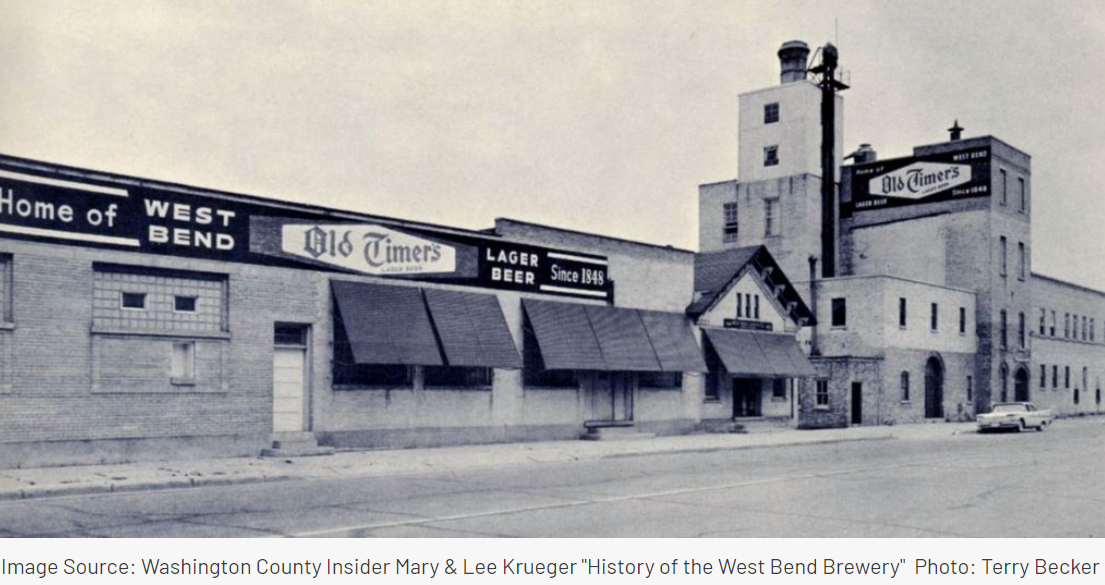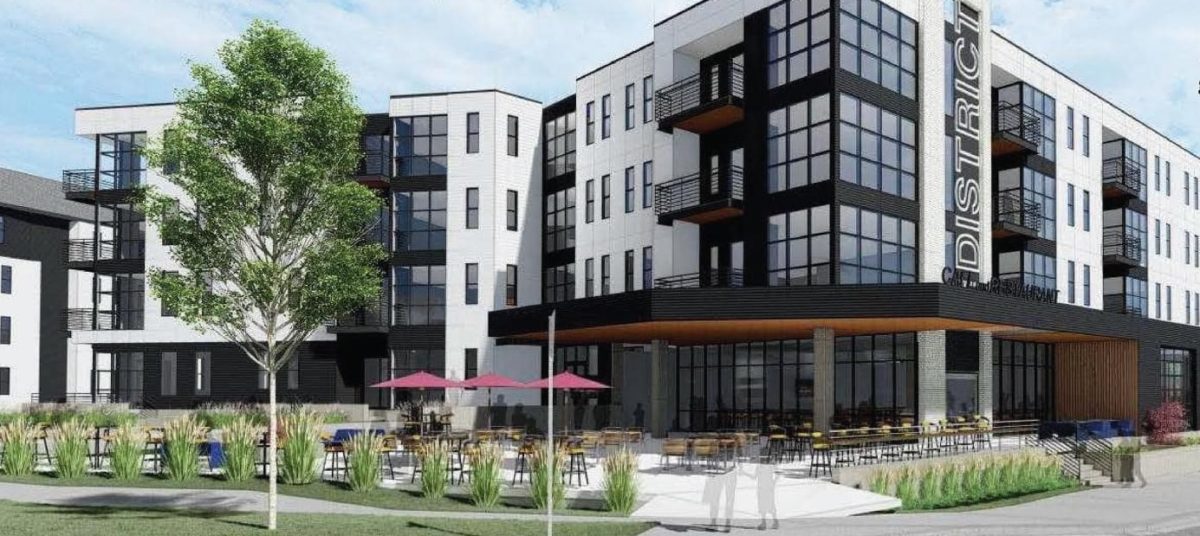 EDWC recently leveraged the Washington County Impact RLF program to assist with financing the build-out of the only commercial space located within The District development in West Bend. The residential complex, located at the corner of Main Street and Washington Avenue, will house in its commercial space the second location for 1840 Brewing Company. The vision for 1840 Brewing is to create a gathering place for the community of West Bend that celebrates the history of brewing in Wisconsin and 1840’s own unique brewing process.
EDWC recently leveraged the Washington County Impact RLF program to assist with financing the build-out of the only commercial space located within The District development in West Bend. The residential complex, located at the corner of Main Street and Washington Avenue, will house in its commercial space the second location for 1840 Brewing Company. The vision for 1840 Brewing is to create a gathering place for the community of West Bend that celebrates the history of brewing in Wisconsin and 1840’s own unique brewing process.
A Colorful History & Unique Opportunity
 The District development is located on the former blighted West Bend Brewery sight. The West Bend Brewery site dates back to the early days of the City of West Bend. Beginning in 1850 as a small-scale brewery housed in a frame building, by 1870 the brewery had expanded into a larger brick building, producing 3,500 barrels of beer annually and providing a local market for tens of thousands of bushels of barley and hops produced by area farmers.
The District development is located on the former blighted West Bend Brewery sight. The West Bend Brewery site dates back to the early days of the City of West Bend. Beginning in 1850 as a small-scale brewery housed in a frame building, by 1870 the brewery had expanded into a larger brick building, producing 3,500 barrels of beer annually and providing a local market for tens of thousands of bushels of barley and hops produced by area farmers.
The block that contains the brewery was home to many other breweries throughout the years. In 1854, the S.F. Mayer and Company purchased the brewery. Across the street was the Eagle Brewery. In 1880, the Eagle Brewery merged with the Mayer & Company to form the West Bend Brewing Company.
In 1919, the West Bend Lithia Company was formed by the owners and partners of the West Bend Brewing Company. The company introduced its famous Lithia beer named for the lithium carbonate found in the local water and it was wildly popular being known as the beer that, “doesn’t give headaches.”
Throughout prohibition, the company made sales of non-alcoholic beer and root beer. The brewery was successful until the 1950s when sales started to decline, and ended up closing in 1972 when the operation was moved to the John Walter Brewing Company in Eau Claire.
Over the years, the brewery site has had various occupants, though West Bend residents have been interested in seeing it truly revitalized. As a brownfield site, this location represented both a challenge and opportunity for the right developer. The District project, with support from the Washington County’s Brownfields Site Redevelopment Program (SRP) is a true brownfield redevelopment success story.
Environmental Assessments
This brewery site had two phases of environmental assessments completed before redevelopment of the location could begin.
During Phase 1, Stantec Consulting Services found that there was a chance of petroleum release along with potential groundwater contamination. There was also a conclusion that there was potential for release from the oil and grease separator and related sanitary sewer connection. The recommendation from Stantec was to complete a Phase II Environmental Site Assessment.
Phase 2 in February 2020 evaluated current soil and groundwater conditions related to recognized environmental conditions identified as part of a Phase 1 of the property. A Site-Specific Sampling and Analysis Plan (SSSAP) was completed in November of 2020 by Stantec for associated laboratory analyses to be performed as part of a Supplemental Site Investigation of the West Bend Brewery Parcels.
The SRP provided $67,500 in funding for Phase 1, Phase 2 Assessments, Site-Specific Sampling & Analysis Plan, Hazardous Materials Survey, and additional Site Investigation.
The District
 Fast forward to 2021 when The District development first broke ground. Construction is well underway and with EDWC’s assistance, the first level commercial space will soon house 1840 Brewing Company.
Fast forward to 2021 when The District development first broke ground. Construction is well underway and with EDWC’s assistance, the first level commercial space will soon house 1840 Brewing Company.
“Supporting the creation of commercial space that the 1840 Taproom will soon occupy demonstrates how using the Developer Segment of Washington County’s Impact RLF program can transform blighted locations into higher and better uses for long-term benefit to the community and its downtown,” Christian Tscheschlok
You can learn more about the Washington County Brownfields Site Redevelopment Program (SRP) here:
Find out how EDWC helps accelerate projects that are a win-win for Washington County businesses and communities:
*Information in this article was sourced from: https://storymaps.arcgis.com/stories/72ed21b2775b48e88bef6063e3e53a84






